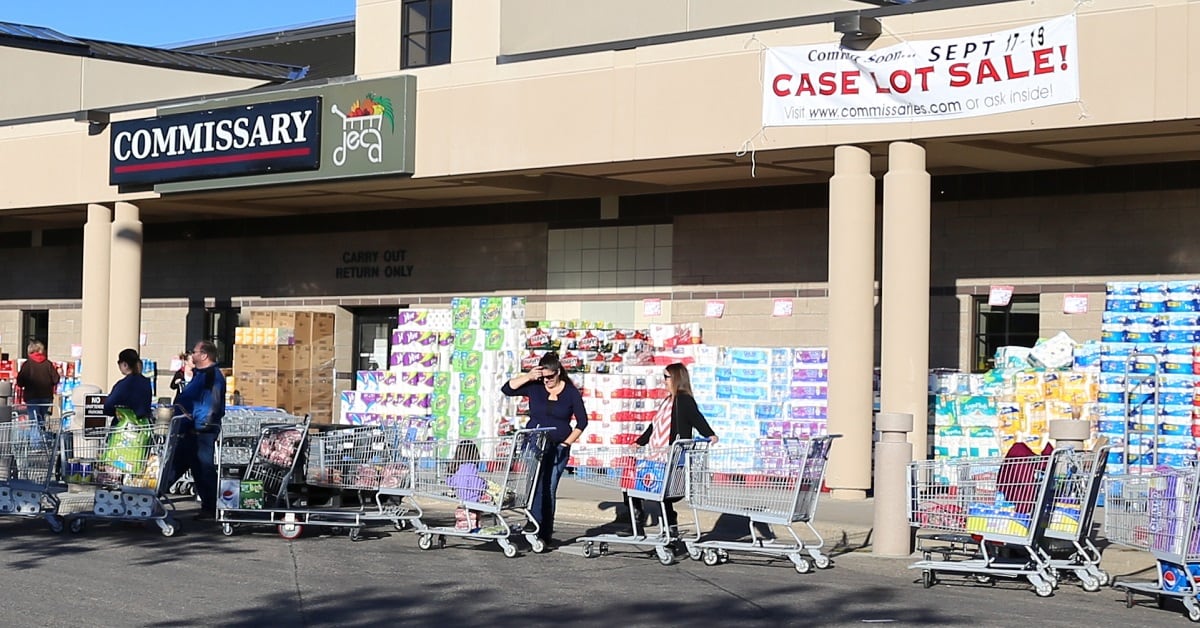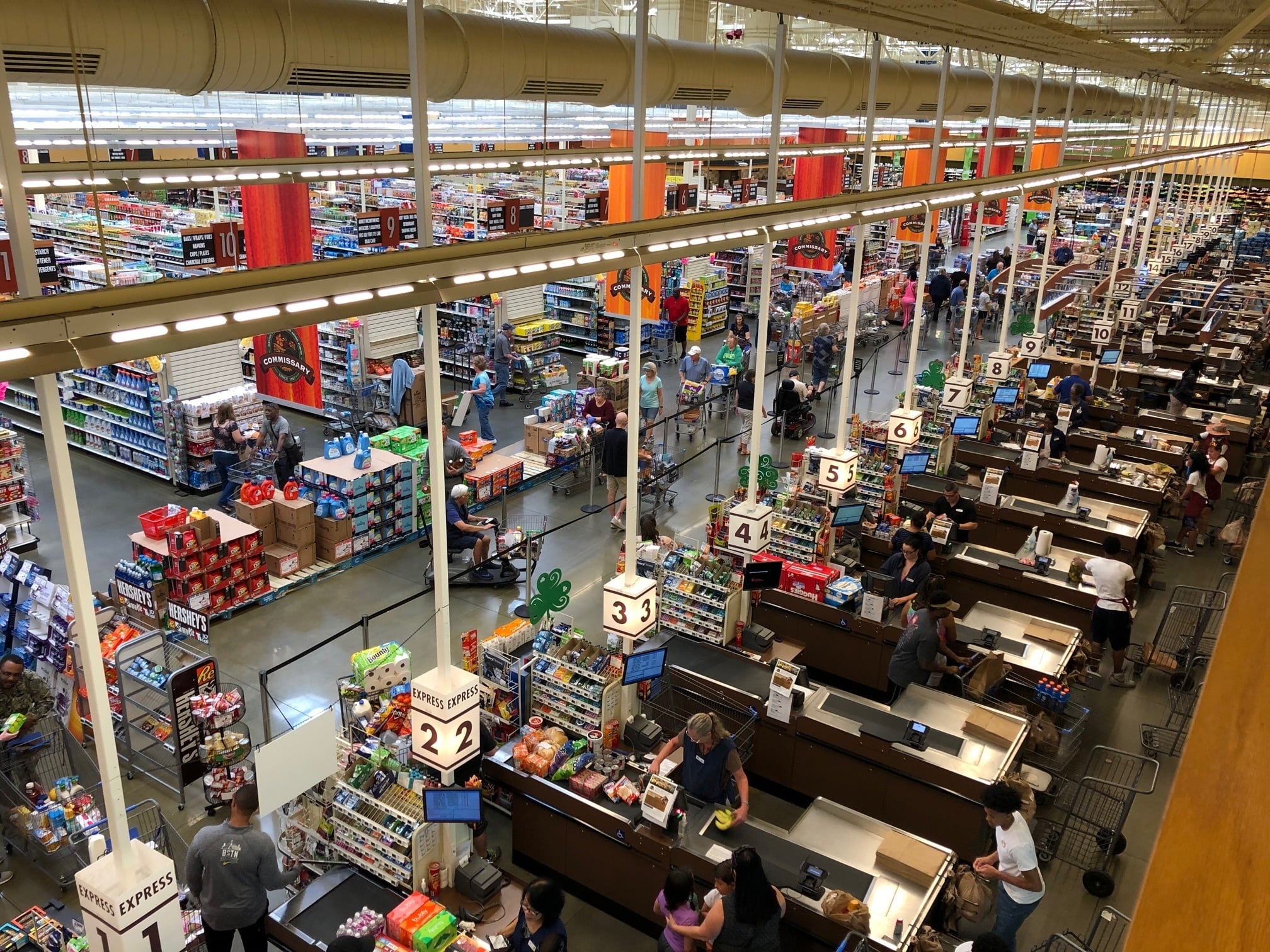Commissaries are seeing “strong sales” among their newly eligible shoppers, even as issues such as the pandemic have hindered these veterans’ ability to shop since they became eligible on Jan. 1, according to the retired Navy rear admiral who leads the commissary agency.
These disabled veterans and other new customers spent nearly $21 million through the end of April, representing about 2 percent of the overall sales in commissaries, said retired Rear Adm. Robert Bianchi, DoD special assistant for commissary operations. During that time there were 273,742 separate transactions. That doesn’t represent the number of individuals, as some people may have made multiple trips to the commissary.
In January, heightened security measures because of ongoing tensions between the U.S. and Iran hampered access for these newly eligible customers at some installations, and the coronavirus pandemic quickly followed. Many of these new shoppers may be less likely to go to grocery stores because they may be at higher risk for being more vulnerable to the coronavirus, Bianchi noted. In addition, some installation commanders have restricted shopping hours for certain shoppers who are not mission essential personnel.
“We’re very proud and happy to be supporting them. I hope as this pandemic subsides or is at least in somewhat of a remission, we’ll see more of these folks on board,” Bianchi said, during a commissary roundtable conducted by the American Logistics Association.
These newly eligible customers include all veterans with VA service-connected disability ratings; Purple Heart recipients; veterans who are former prisoners of war; and primary family caregivers of eligible veterans under the VA caregiver program. Previously those with a 100 percent service-connected disability rating, and Medal of Honor recipients were allowed the benefits. They are eligible to shop at commissaries, exchanges, and to use certain morale, welfare and recreation programs. (Many MWR programs have been shut down during the pandemic.)
RELATED

Defense and VA officials have said 4.1 million people fall into these categories, but they don’t expect high volumes in every commissary, because of distance and other factors. So far the new customer traffic is higher where it was expected at commissaries in areas with high cost of living outside military installations.
The 10 commissaries with the highest sales from these customers are: Pearl Harbor and Schofield Barracks, Hawaii; March Air Reserve Base, McClellan, and San Diego Naval Base, Calif.; Orote at Naval Base Guam and Andersen AFB, Guam; Fort Meade and Andrews AFB, Md.; and Jacksonville Naval Air Station, Fla. Pearl Harbor had the highest number of sales among this new group, with $883 million in sales over that four-month period and 10,067 transactions. The Pearl Harbor sales volume was nearly double the amount of the store with the next highest volume, March AFB.
The new customers are coming less often to the commissary, but they’re spending more per trip than other commissary customers as a whole. For example, in April, the average basket size in the new group was $83.30, and that amount has been increasing each month. For other shoppers as a whole, the average basket size in April was $76.54.
Karen has covered military families, quality of life and consumer issues for Military Times for more than 30 years, and is co-author of a chapter on media coverage of military families in the book "A Battle Plan for Supporting Military Families." She previously worked for newspapers in Guam, Norfolk, Jacksonville, Fla., and Athens, Ga.





